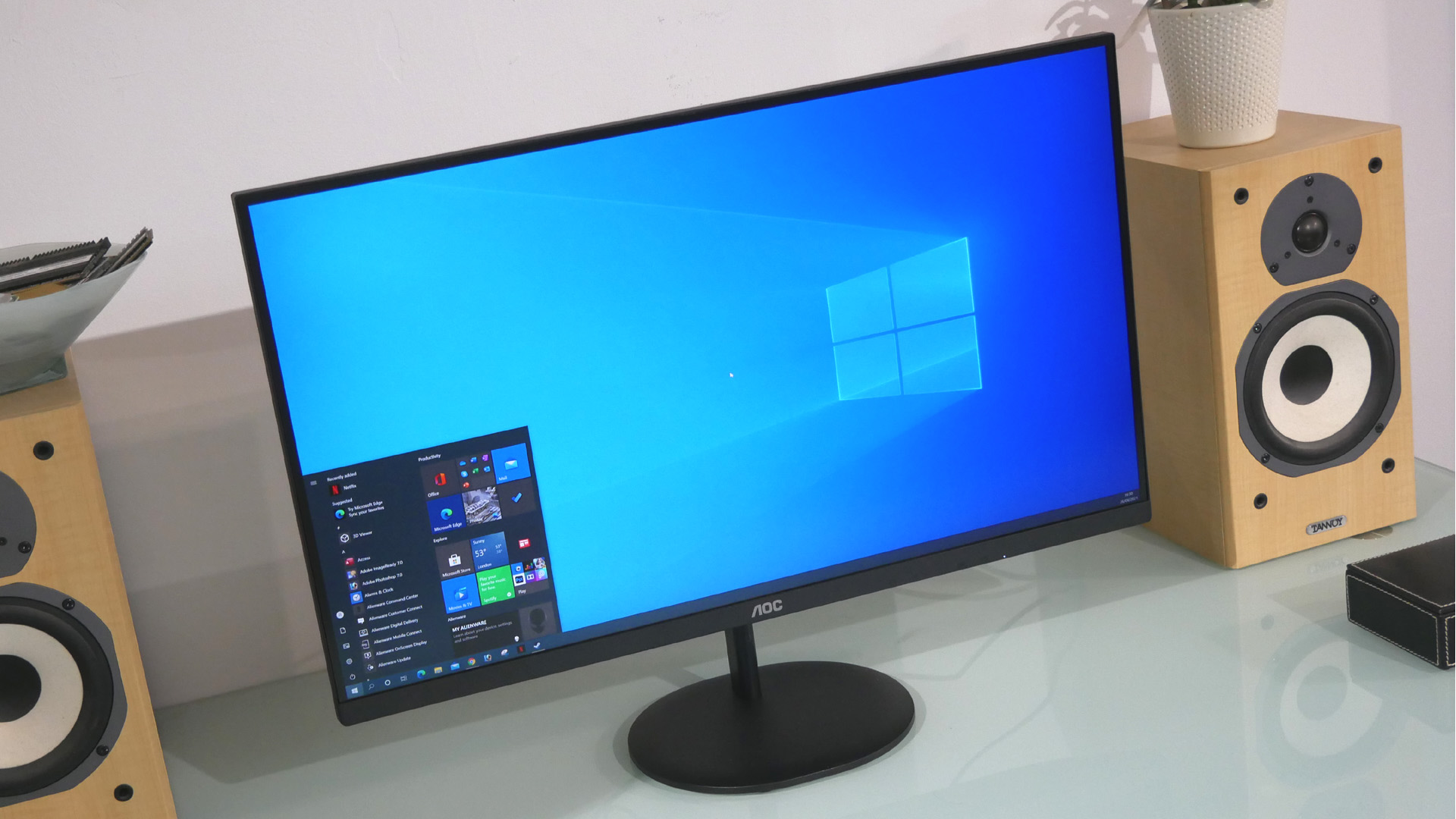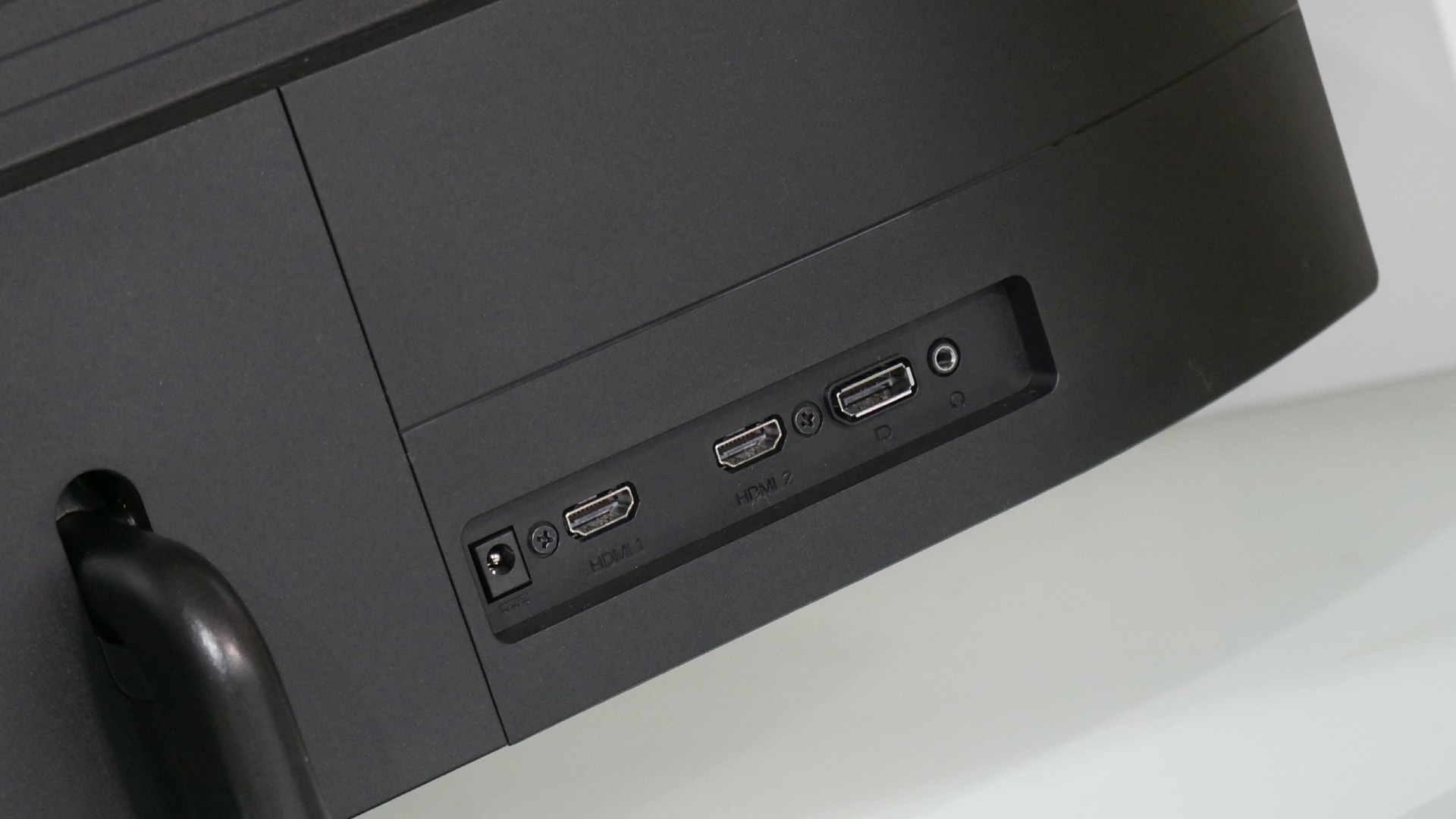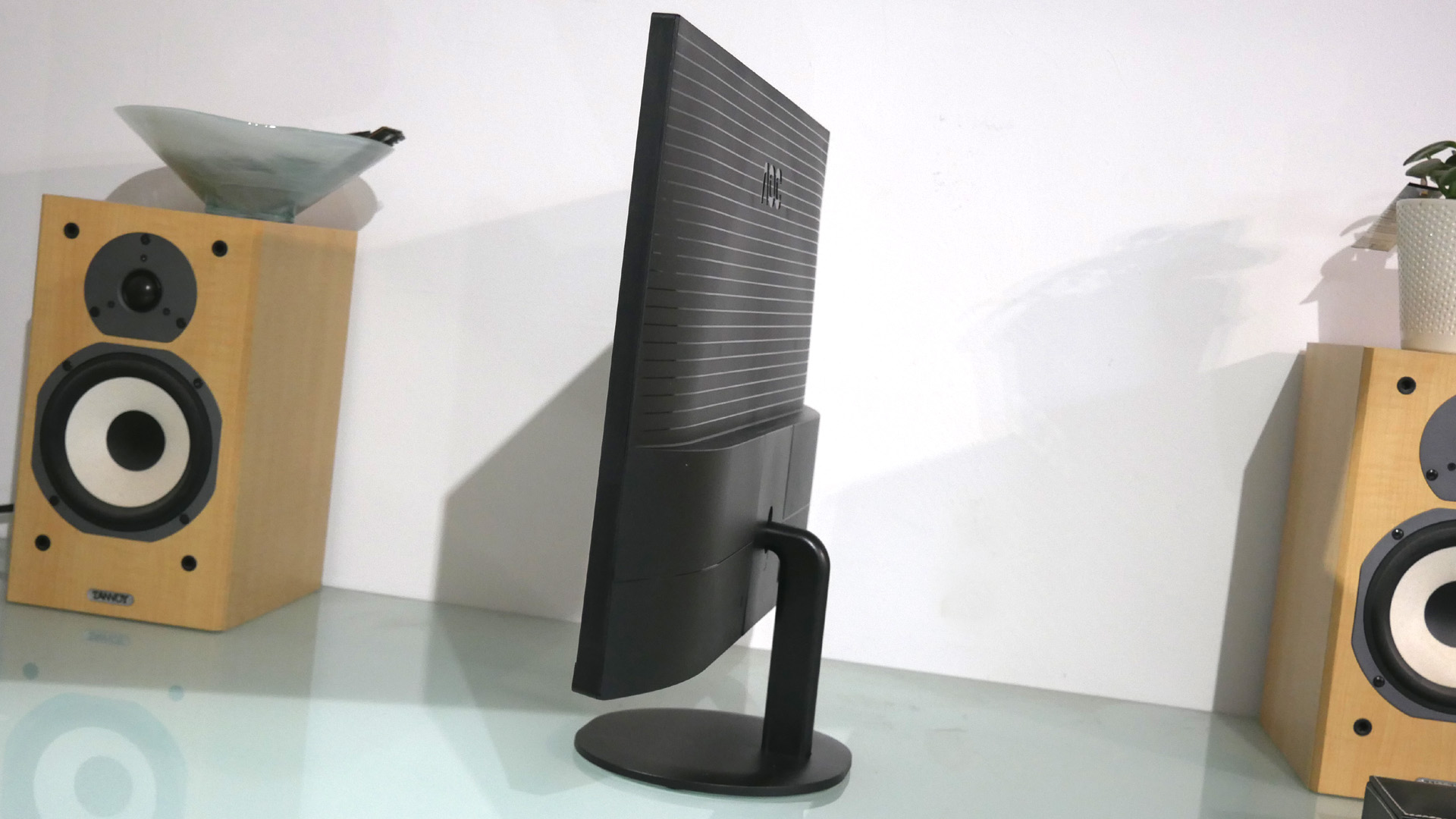TechRadar Verdict
AOC’s latest 27-inch monitor is short on frills including HDR, but delivers 4K IPS precision without the premium price.
Pros
- +
Lovely 4K IPS panel
- +
Surprisingly good panel accuracy and uniformity
- +
Affordable price
Cons
- -
No HDR support
- -
No USB-C connectivity
- -
Tilt-only stand
Why you can trust TechRadar
4K TVs are now remarkably cheap. PC monitors? Not so much. The full 4K or UHD monitor experience often retains quite a price premium, especially when combined with premium IPS panel technology.
Overall: 4
Design: 3.5
Features: 3
Performance: 4
Usability: 3.4
Value: 5
Enter the new AOC U27V4EA, one of the few PC monitors that delivers an affordable combination of 4K and IPS technology. Predictably, the U27V4EA is a 27-inch model. It’s also inevitable at this price point that you’re not getting much beyond the bare basics.
Not to put too fine a point on it, but the feature set is positively parsimonious. The stand, for instance, is tilt only. Connectivity doesn’t include USB-C. There’s no HDR support either. But if what you want is a decent quality 4K experience at the lowest possible cost, this new AOC panel certainly looks promising.

Price and availability
Like an awful lot of tech products right now, pricing for the AOC U27V4EA varies pretty wildly. In the UK, Amazon currently lists it at £335, while the cheapest alternative online price is £274. We suspect the latter is closer to where the AOC U27V4EA will settle if and once global supply chains return to something like normality.
In the US, the AOC U27V4EA isn’t yet available. Its predecessor, the AOC U27V3, currently goes for around $250, so a price in the region of no more than $275 is a reasonable expectation.
In both cases, that’s great value for a 4K monitor with a quality IPS panel. OK, you don’t get any frills. The stand is tilt-only and there’s no USB-C. But if you want a proper 4K experience for as little money as possible, look no further.

Design and features
Forget about frills. The AOC U27V4EA doesn’t have any. The design and build quality is generic, but not entirely basic. The screen enclosure is anonymous black plastic. But it does comprise thin bezels on three sides, plus a nice metal arm for the stand. So, the overall look is minimalist and contemporary. Given the price point, first impressions are positive.
Sign up to the TechRadar Pro newsletter to get all the top news, opinion, features and guidance your business needs to succeed!
At its core is a 27-inch IPS panel with a full 4K 3,840 by 2,160 resolution. As a competitively priced model designed for productivity, it’s no surprise to find it runs at 60Hz. Likewise, the lack of HDR support is pretty much a given at this price point. It’s also not much of a drawback, given few so-called HDR monitors actually deliver a true HDR experience. In this context, better to concentrate on decent SDR performance. For the record, adaptive refresh is supported. Along with the claimed 4ms response, therefore, the AOC U27V4EA should be able to turn its hand to a spot of gaming when required.

With that in mind, the broader specifications look reasonably promising. Brightness is pegged at 350nits, pixel response at 4ms. As for color accuracy, AOC claims 83 percent coverage of the Adobe RGB space and 112 percent of sRGB. Those figures aren’t the stuff of a bona fide content creation panel. But they’re certainly adequate for generous purpose productivity.
Panel size 27-inch
Panel type IPS
Resolution 3,840 x 2,160
Brightness 350cd/m2
Contrast 1000:1
Pixel response 4ms
Color coverage 83% AdobeRGB, 112% sRGB
Refresh rate 60Hz
Vesa 100mm x 100mm
Inputs DisplayPort 1.2, HDMI 2.0 x2
As for the OSD menu, it’s typical AOC fare, which means a touch idiosyncratic and a little clunky looking, but functional enough and with a decent array of features including overdrive settings. However, presets for commonly used color spaces are limited to just sRGB. Users of Adobe RGB, DCI-P3 et al will need to calibrate manually.
Inputs wise, the AOC U27V4EA sports a pair of HDMI 2.0 and a single Displayport 1.2 socket. So all three support the full 4K resolution at 60Hz. What you don’t get is USB-C connectivity, support for laptop charging or even a USB hub of any kind. Of course, USB-C connectivity with device charging always adds significantly to the price of a display. It’s a very appealing feature, but it will cost you.

Performance
This is an SDR display rated at a maximum of 350nits and 1,000:1 contrast. Expectations suitably calibrated, the AOC U27V4EA performs very much in line with expectations. This isn’t a super punchy display by today’s standards.
However, it’s plenty bright enough for a typical productivity remit and offers, rich natural colors. In our test images, it also proves to be nicely calibrated, with smooth gradients and not evidence of compression.

Speaking of calibration, the AOC U27V4EA does come with a factory calibration report, which is impressive for this class of display. With only one value marginally breaching 2 across the full suite of sRGB Delta E measurements, most well below 1 and an average of 0.47, the U27V4EA actually offers surprisingly good color accuracy given the generic productivity remit.
Even more impressive - almost to the point of being borderline hard to believe - is the panel uniformity part of the report, which returns 100 percent uniformity. That said, in practice subjective assessment does indeed reveal a very evenly lit panel with good contrast and very little IPS glow. The anti-glare coating is also nice and smooth with no sparkle.

Pixel response is good given this is not a monitor pitched at gamers, though the user-configurable three levels of overdrive have little apparent impact on proceedings. At least the most aggressive setting doesn’t in any obvious overshoot or inverse ghosting. Add in adaptive sync support and no noticeable input lag and the U27V4EA actually makes for a decent gaming panel, albeit the 4K native resolution places serious demands on graphics rendering power.
Verdict

The AOC U27V4EA is not a pro level content creation panel. But it does have sufficient inherent panel fidelity for backup duties in that regard. For everything else, it’s just a lovely 4K IPS panel for not a lot of money. It’s even a decent gaming screen, albeit with the challenges that driving any 4K monitor in-game entail.
Sure, there’s no USB-C connectivity and the build quality and feature set likewise reflect the aggressive pricing. But then if you want USB-C plus that premium CE aesthetic and tactile quality, you’re simply going to have to pay far more.
If anything then, the AOC U27V4EA over delivers on expectations when it comes to panel quality. It’s short on features, including some that don’t add to the experience, but long on image quality. Which is exactly what we want from this class of display.
- We've listed the best business monitors.
Technology and cars. Increasingly the twain shall meet. Which is handy, because Jeremy (Twitter) is addicted to both. Long-time tech journalist, former editor of iCar magazine and incumbent car guru for T3 magazine, Jeremy reckons in-car technology is about to go thermonuclear. No, not exploding cars. That would be silly. And dangerous. But rather an explosive period of unprecedented innovation. Enjoy the ride.
